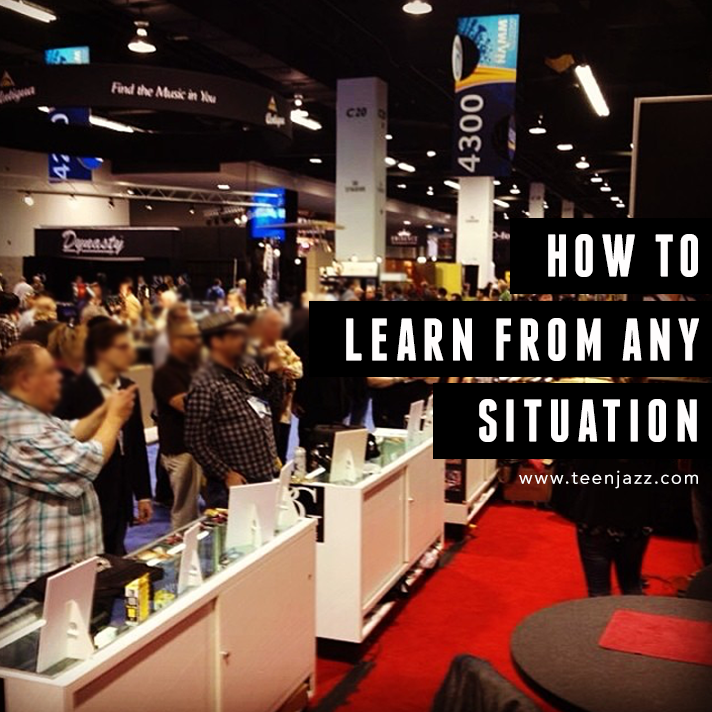When we make the transition from school to the real world, maintaining our learning curve can present a challenge. In school we’re often handed things that we need to work on in the form or homework or assignments, and so we rarely have to think about the next step.
But what happens when you no longer have someone telling you what to do to get better?
How do you find the direction that you need to continue improving?
One of the easiest ways ways to get direction whenever you feel as though you’re struggling is to study with a good teacher.
No matter how long we’ve been out of school, you’re never to old for a private lesson with someone who can provide you with good feedback!
But if you’re not able to take lessons for whatever reason, there are a few things that you can do on your own to improve and overcome any plateaus in your learning that you might be facing.
Learn from the bad
Start recording yourself as you practice and as you perform. Audio is great but video is even better.
The next step is the hardest one.
Watch it.
For some, watching a video of a performance or listening back to a practice session can be an awkward (or even frustrating) experience. I, for one, don’t like to watch videos of myself performing.
But how am I going to improve my live performance if I don’t watch videos?
If I don’t take the time to look at what I’m doing, there are likely things that I’ll miss. Perhaps I believe I’m more dynamic on stage or that I’m moving around more than I am in reality. Perhaps I don’t realize that I’m constantly reaching up to run a hand through my hair or not looking out at the audience enough.
The only way I’m really going to catch all of those little things that can truly amp up my live performance (if I work on them) is by analyzing past performances.
I need to look at the bad things that I’m doing and iron them out.
But you can also learn from the “bad” things that other players or performers are doing.
Perhaps you went to a show and there was something about it you didn’t enjoy. Maybe the musicians didn’t engage with the audience or their set list was too eclectic. Perhaps they weren’t well rehearsed. Or maybe it was just the way the lead stood with bad posture that bothered you.
Whatever it is, learn from it. Make a note of the things that you dislike about other performers and make a point of never doing them yourself.
Learn from the good
When you are watching the videos of your past performances, don’t just pay attention to the things you want to work on. Keep track of the things that you’re doing that you like.
When you’re listening back to the audio recordings of your practice, take note of the things that you do that are unique to your playing.
And then keep doing them.
Also, if you happen to invest in tickets from platforms like TickPick and similar ones to watch live concerts, or when you listen to albums from other artists, you can try to listen and watch for things that impress you.
Then learn how to do them yourself before adapting them so that they become your own.
Listen to musicians that inspire you to work harder and get to the next level with your playing and performance.
If, for whatever reason, you’re unable to go out and see performances put on by the musicians that inspire you, spend some time browsing videos on YouTube. And even if you are able to go out and see live shows, spend time studying the performances of other musicians on Youtube as well.
You can learn from any situation – whether good or bad – and use what you’ve gained from that experience to improve as a player and grow as a musician. It’s up to you to collect those experiences and put them to use.
[template id=”182″]
